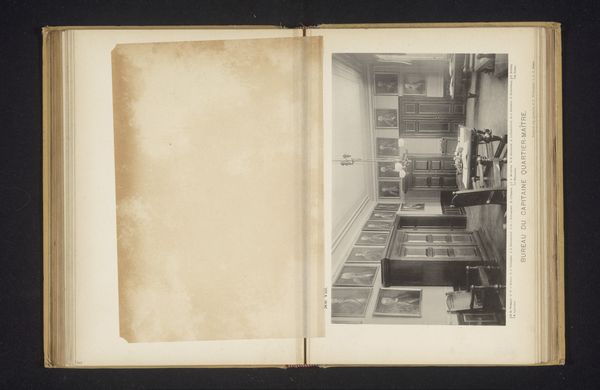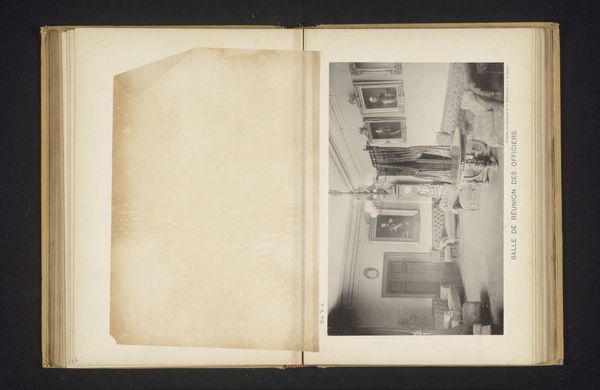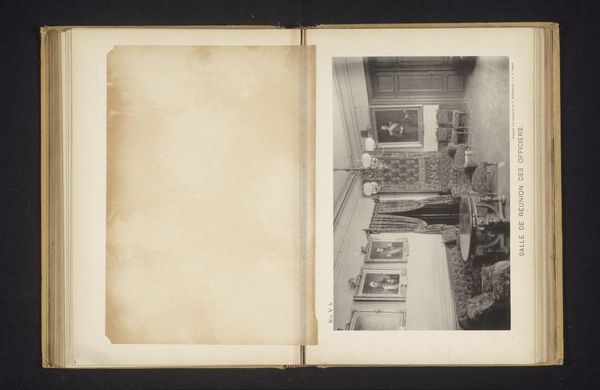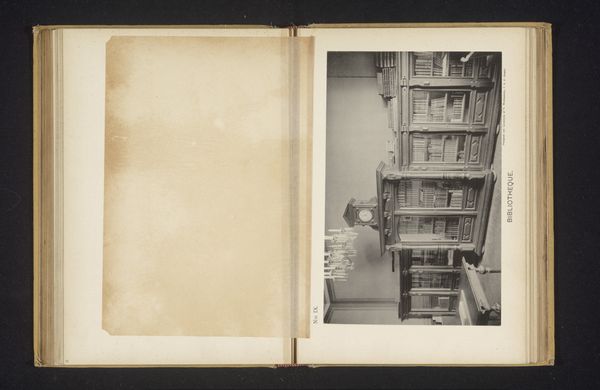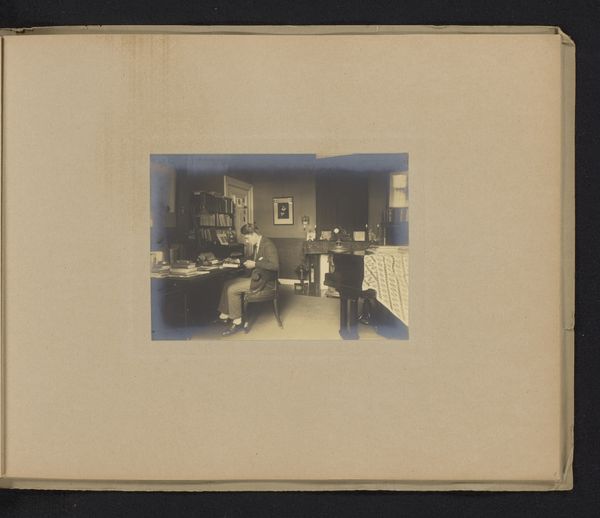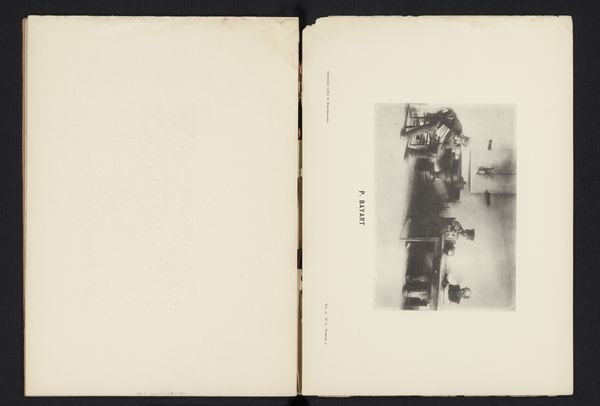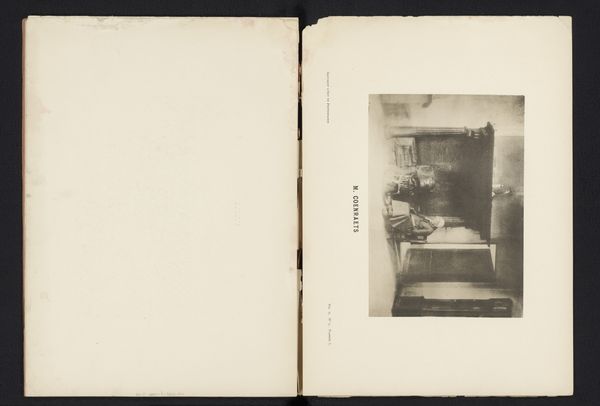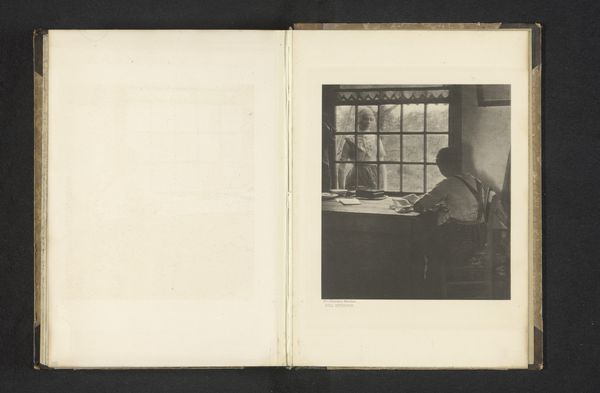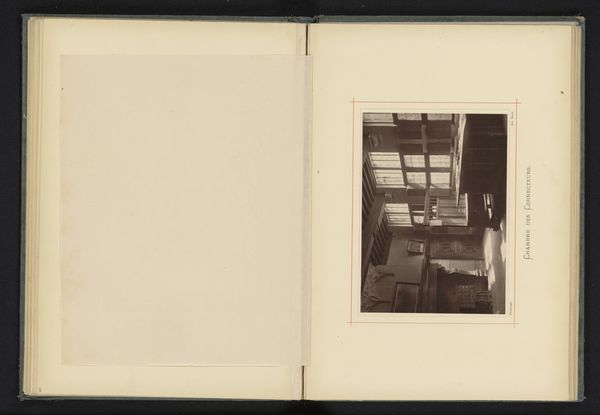
Ontvangstruimte van een kolonel in een kazerne van de Svea livgarde in Stockholm before 1891
0:00
0:00
#
aged paper
#
homemade paper
#
ink paper printed
#
white palette
#
paper texture
#
thick font
#
white font
#
golden font
#
historical font
#
small font
Dimensions: height 120 mm, width 189 mm
Copyright: Rijks Museum: Open Domain
Editor: Here we have, “Reception Room of a Colonel in a Barracks of the Svea Life Guards in Stockholm,” dating from before 1891, credited to V. Wolfenstein. It's this fascinating book image. There's an opposing blank page that really throws into sharp relief the photo on the right. It’s so formal, austere even. What jumps out at you? Curator: The rigidity and formality are certainly palpable, aren't they? I find myself drawn to the chandelier. Not for its illumination, but for what it represents. Think of chandeliers throughout history - power, wealth, a gathering of elites. It's presence here, in a military context, tells us much about the social and cultural status attached to military rank in late 19th century Sweden. What message do you think this image aimed to convey about the military at the time? Editor: I suppose the intended message was of refinement and order, even luxury. A sense of power made tangible. It’s interesting how staging an environment like this translates into authority, even in a photograph. Curator: Exactly. Notice also the portrait on the wall. Can you see how portraiture has long been used to communicate not only an individual's likeness, but their status and lineage? In this context, it contributes to a visual narrative of tradition, discipline, and perhaps even inherited power within the military structure. It acts as a cultural touchstone, reminding those present of the values and history associated with the position. It serves as constant background and encouragement. Editor: That makes sense. The chandelier and the portrait together speak volumes. I didn't consider the way they reinforce the implied values in this space. Curator: Precisely. Images within images, symbols within symbols. Editor: I will definitely see photographs in a completely different light from now on. Thanks!
Comments
No comments
Be the first to comment and join the conversation on the ultimate creative platform.
